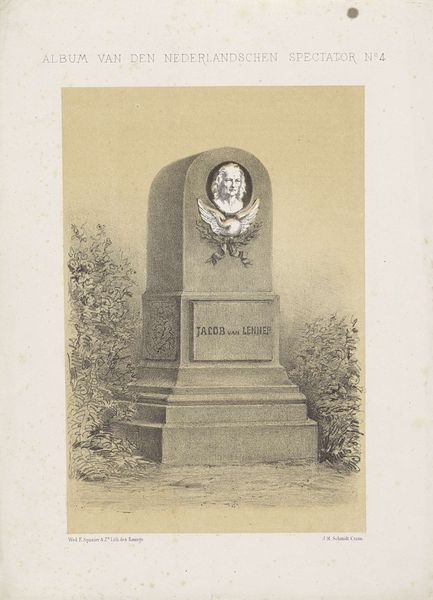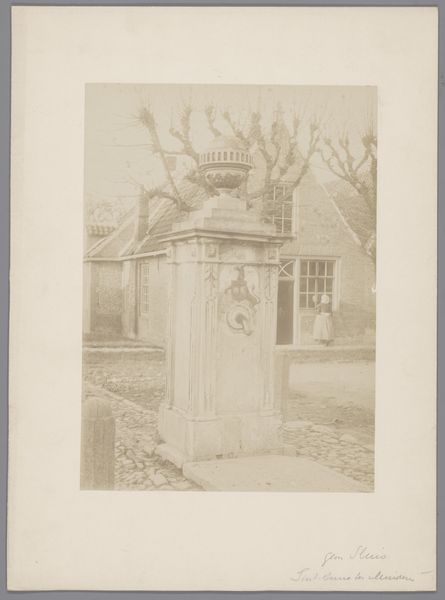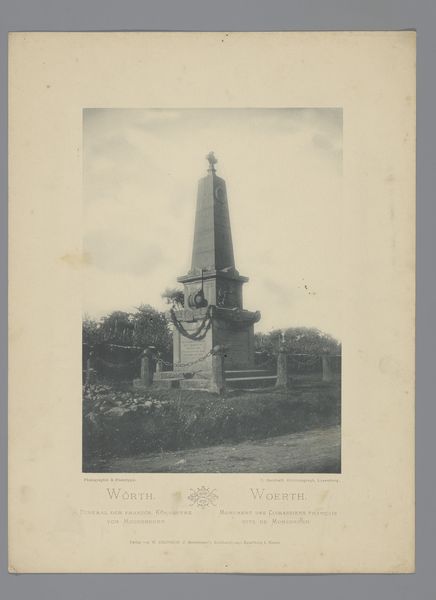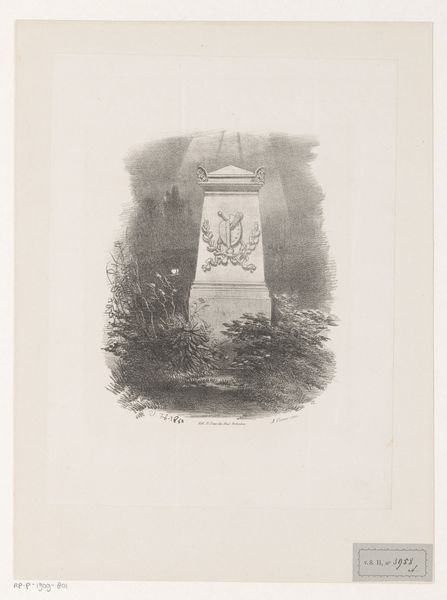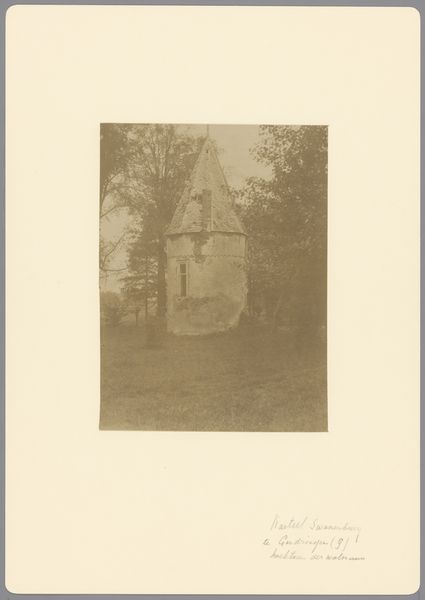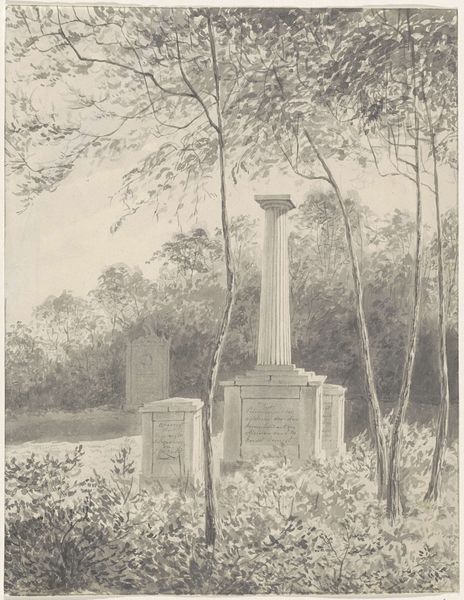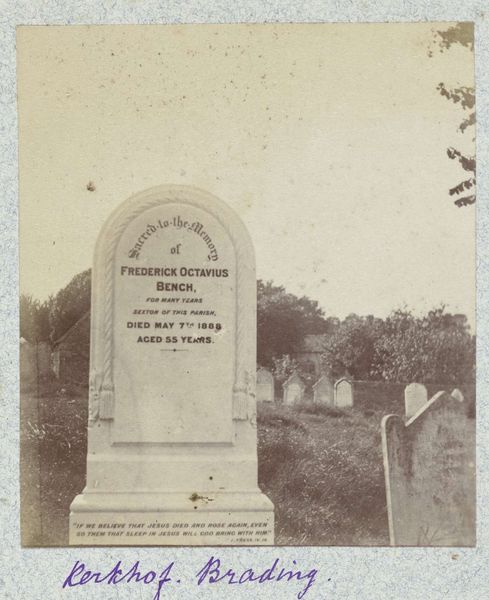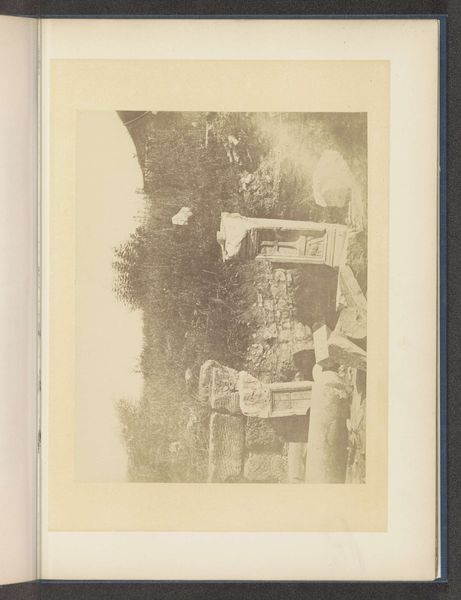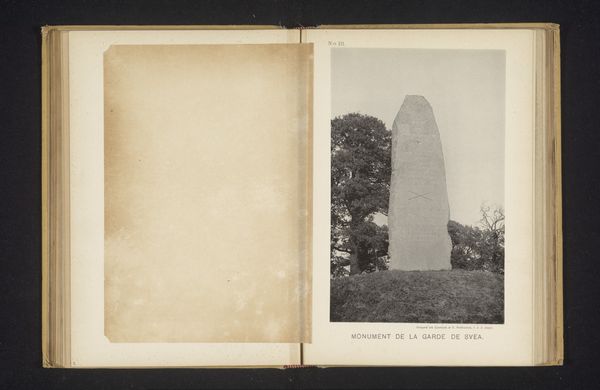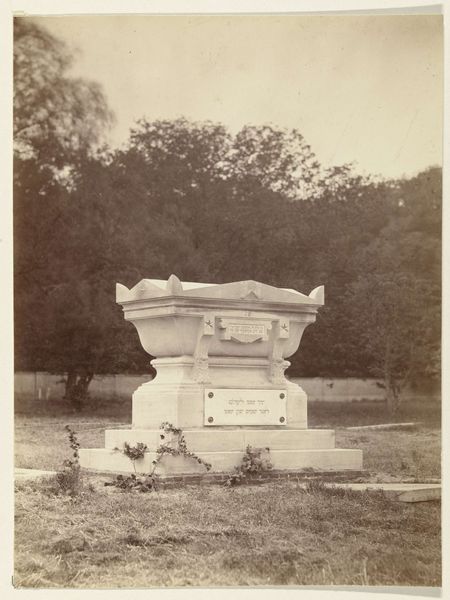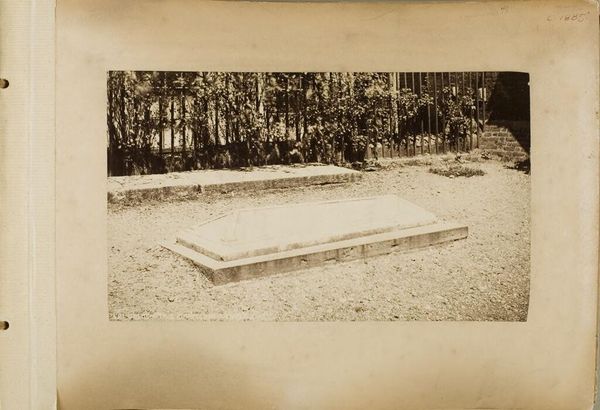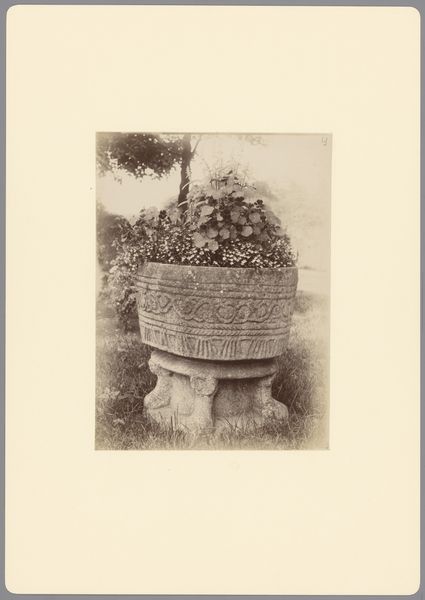
photography, albumen-print
#
landscape
#
photography
#
albumen-print
Dimensions: height 207 mm, width 155 mm
Copyright: Rijks Museum: Open Domain
Editor: This albumen print from sometime between 1875 and 1890 captures the grave monument of Georg Everhard Rumphius, on Ambon. I'm struck by how the stone of the monument seems to be bleeding into the tropical foliage around it. What significance do you see in this image, beyond its documentary purpose? Curator: The monument itself speaks volumes. Consider its shape, that stoic rectangular form reminiscent of classical architecture – it embodies stability, remembrance, a conscious attempt to establish a lasting legacy in a faraway land. What does that contrast with the "bleeding," as you call it, suggest to you about the nature of permanence itself? Editor: Maybe that even stone is impermanent? I mean, everything fades into the landscape eventually? Curator: Precisely. The lush vegetation, aggressively reclaiming the stone, becomes a potent symbol of the unstoppable life cycle, an allegory for nature's triumph. And what of the inscription? The unreadable inscription acts as a further symbolic element... What stories, what contributions are obscured, yet stubbornly present? Editor: I hadn't thought about it like that, that what is present in the image can suggest absence. Curator: Indeed, the visual language here uses contrasts - cultivated versus wild, permanence versus decay - to remind us of the complicated, often fraught, interplay between human ambition and nature's enduring power. And what of Rumphius’ legacy that the photograph intended to convey, the story beyond the grave? How do the framing and textures shape these memories? Editor: I guess I was just looking at the monument, but seeing it in relation to everything else is fascinating! It makes you wonder who or what is framing our own legacies in the long run.
Comments
No comments
Be the first to comment and join the conversation on the ultimate creative platform.
